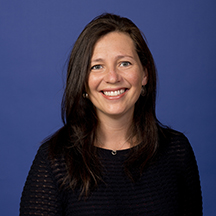3 Ways to Become a More Mindful Educator This Year
by Tomiko Breland
 Every year, we make New Year’s resolutions. We promise to lower our blood pressure, raise our expectations, and balance our checkbooks. We vow to become better professionals and build stronger relationships. This year, as English language educators, let’s focus on becoming more mindful—more aware of the world you move in—and learning how to channel that mindfulness into conscientious action.
Every year, we make New Year’s resolutions. We promise to lower our blood pressure, raise our expectations, and balance our checkbooks. We vow to become better professionals and build stronger relationships. This year, as English language educators, let’s focus on becoming more mindful—more aware of the world you move in—and learning how to channel that mindfulness into conscientious action.
Outlined here are three achievable goals to help you improve yourself and the world you move in, complete with action steps to help ensure you start—and stay—the course. Choose one (or more) of the resolutions below and get started being a better, more thoughtful English language professional today.
1. Reduce your paper trail.
Why It’s Important
Increase your classroom’s sustainability and, in so doing, make your work easier, more efficient, and more organized. The amount of paper each school uses varies depending on student and teacher count and policies, and estimates vary from 250,000 to 360,000 sheets annually. (According to the Green Schools Initiative [n.d.], schools in Los Angeles, California, USA, go through 75,600 tons of paper per year!) In addition to bettering your classroom management, decreasing classroom paper use can also decrease greenhouse gases, nitrous oxides, and other toxic affluents (Green Schools Initiative, n.d.).
Action Steps
-
Commit to having at least one paperless day of class per week—or, if you’re up for the challenge, a full paperless week every month. You might be surprised how innovative your lessons can be when you can’t rely on paper, and how excited your students will be to rely on varied modes of learning.
-
Invest (mentally) in a great classroom management app—or several. It can certainly be daunting to put so much trust into a new technology, but it can be well worth the risk. There’s an app for nearly every aspect of classroom management:
-
Class Dojo and
Remind allow you to share photos, videos, and messages with parents and students (so you can do away with sending paper flyers home);
-
Teacher’s Class BEHAVIOR PRO helps you track all kinds of student behaviors (so you can get rid of that behavior log, or scribbled notes in your attendance log);
-
Smart Seat creates seating charts and records attendance (so you can toss that attendance log completely); and
-
apps like
TeacherKit do it all: organize multiple classes and manage seating charts, attendance, student behavior, and grades.
-
Get others involved. The Northeast Recycling Council created a great list of suggestions and guidance for reducing paper use in schools at the classroom and school levels, complete with a memo to send out to staff. (Just be sure, of course, to send that memo out electronically!)
2. Improve your knowledge of working with special-needs students.
Why It’s Important
“Between 1989 and 2013, the percentage of students with disabilities who were in a general education class for 80 percent or more of the school day increased from about 32 percent to nearly 62 percent,” and yet “many teacher-education programs offer just one class about students with disabilities to their general-education teachers” (Mader, 2017). The increasing number of students with disabilities in general education makes it more important than ever for all teachers to know how to work with this student population. It can be especially important for English language educators, who may have a difficult time determining if their language learners’ difficulties acquiring language stem from their racial, cultural, and linguistic backgrounds or from a language disorder.
Action Steps
Take an online teacher education course to further your knowledge of this subject. Try one of these:
Don’t have the time to commit to a full course? Try this 77-minute webinar:
3. Don’t let a first-year teacher fail.
Why It’s Important
According to the National Center for Education Statistics (2015), in the United States at least 17% of new teachers leave the field in their first 5 years of teaching, and there are a number of reasons, including low salaries and poor performance. Another reason, one that we as educators can help mitigate, is a lack of support. First-year teachers who don’t have a mentor are more likely to quit. Kate Walsh, the head of the National Council on Teacher Quality, has said, “We treat the first year of teaching like it is some sorority or fraternity hazing. Educators expect a new teacher to be sick…at the thought of how she is going to survive the day just because that's what they once did” (Pondiscio, 2016). You remember what it was like when you first started: Throw someone else a lifeline.
Action Steps
This one is simple, though not necessarily easy. Become a mentor and take a new teacher under your wing. If your school doesn’t already have a mentoring program in place, simply reach out to your administrator and let him or her know your intentions. He or she is likely to have a suggested mentee for you and can facilitate the arrangement. But before you reach out, make sure you know what it takes to be a great mentor. Here’s some reading to get you started:
-
-
-
-
For administrators who would like to provide mentoring professional development for their ESL teachers:
Strategic Mentoring (
Language Magazine)
You can make any number of New Year’s resolutions this year; these suggestions can help you not only feel better, but they can also help improve the world around you.
References
Green Schools Initiative. (n.d.). Changing paper consumption. Retrieved from http://www.greenschools.net/article.php-id=75.html
Mader, J. (2017, March 1). How teacher-training hinders special needs students. The Atlantic. Retrieved from https://www.theatlantic.com/education/archive/2017/03/how-teacher-training-hinders-special-needs-students/518286/
National Center for Education Statistics. (2015). Public school teacher attrition and mobility in the first five years: Results from the first through fifth waves of the 2007–08 beginning teacher longitudinal study. Washington, DC: Author. Retrieved from https://nces.ed.gov/pubs2015/2015337.pdf
Pondiscio, R. (2016, March 25). The teacher hazing ritual. U.S. News & World Report. Retrieved from https://www.usnews.com/opinion/knowledge-bank/articles/2016-03-25/poor-teacher-training-omits-classroom-management-expects-first-year-fails
Tomiko Breland is TESOL project editor. She received her BA in English from Stanford University, her MA in writing from the Johns Hopkins University, and her certificate in TESOL from Anaheim University. In her free time, she writes and edits fiction.
TESOL Blogs
Interested in writing a blog for TESOL?
Read the submission guidelines and send us your post!
Check out a few recent TESOL Blog posts:
|
How to Overcome Writer’s Block: Ideas from Writing Experts, by Elena Shvidko
 Writer’s block is a common writing problem. It can occur in any type of writing—academic, creative, professional. It can be experienced by both native and nonnative speakers of a language, and it can surely happen to novice and even experienced writers. I am certainly familiar with writer’s block, and I am therefore very interested in finding out what other writers do to overcome this obstacle. So I asked several experienced writers, who are prominent and prolific scholars in the field of TESOL and second language writing, about how they cope with writer’s block. I hope you will find their ideas helpful. Read more. Writer’s block is a common writing problem. It can occur in any type of writing—academic, creative, professional. It can be experienced by both native and nonnative speakers of a language, and it can surely happen to novice and even experienced writers. I am certainly familiar with writer’s block, and I am therefore very interested in finding out what other writers do to overcome this obstacle. So I asked several experienced writers, who are prominent and prolific scholars in the field of TESOL and second language writing, about how they cope with writer’s block. I hope you will find their ideas helpful. Read more.
|
|
How the EFL and ESL Classrooms Differ, by Maxi-Ann Campbell
 This is the final blog in a four-part series on teaching English abroad. This blog will focus on ways in which the EFL classroom differs from teaching in an ESL context. Read more. This is the final blog in a four-part series on teaching English abroad. This blog will focus on ways in which the EFL classroom differs from teaching in an ESL context. Read more.
|
|
Tips for TESOL Teachers on ELL Advocacy, by Kristen Lindahl
 This is a guest post by Alpha A. Martínez-Suárez, a doctoral student in the culture, language, and literacy program at the University of Texas at San Antonio. She works as a research scientist for the Academy for Teacher Excellence and volunteers as an advocate for the Young Center for Immigrant Children’s Rights, helping unaccompanied minors detained by immigration officials. Alpha also serves as board member and chair of the Advocacy Committee for TexTESOL Region II. In this post, she discusses what she learned at the 2017 TESOL Advocacy and Policy Summit. Read more. This is a guest post by Alpha A. Martínez-Suárez, a doctoral student in the culture, language, and literacy program at the University of Texas at San Antonio. She works as a research scientist for the Academy for Teacher Excellence and volunteers as an advocate for the Young Center for Immigrant Children’s Rights, helping unaccompanied minors detained by immigration officials. Alpha also serves as board member and chair of the Advocacy Committee for TexTESOL Region II. In this post, she discusses what she learned at the 2017 TESOL Advocacy and Policy Summit. Read more.
|